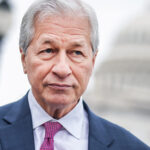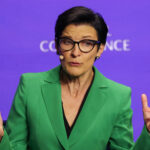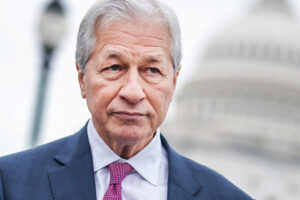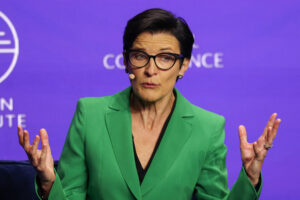
Bond yields fell sharply on Monday as investors bet that the failures of Silicon Valley Bank and Signature Bank would cause the Federal Reserve to raise borrowing costs more slowly as it battles inflation.
What’s happening
- The yield on the 2-year Treasury TMUBMUSD02Y, 4.334% tumbled 38 basis points to 4.213%. Yields move in the opposite direction to prices.
- The yield on the 10-year Treasury TMUBMUSD10Y, 3.602% retreated 16.3 basis points to 3.542%.
- The yield on the 30-year Treasury TMUBMUSD30Y, 3.674% fell 5.2 basis points to 3.658%.
What’s driving markets
The monetary policy-sensitive 2-year Treasury yield plunged at one stage early on Monday by more than 40 basis points as investors made bets that worries about the banking system in the wake of the collapse of SVB SIVB, -60.41% and Signature Bank SBNY, -22.87% would force the Federal Reserve to slow the pace of interest rate rises.
The 2-year yield, which just last Thursday was trading above 5%, a 15-year high, dropped below 4.2%.
Markets are pricing in a 95.2% probability that the Fed will raise interest rates by another 25 basis points to a range of 4.75% to 5.0% after its meeting on March 22nd, according to the CME FedWatch tool.
Just last week the chances of a 50 basis point hike were priced at 70%, and now they are zero.
The central bank is expected to take its Fed funds rate target to 4.93% by July 2023, according to 30-day Fed Funds futures. Several days ago the so-called terminal rate was expected to be above 5.6% in October.
The MOVE index, which measures expected volatility in the Treasury market, sits at 140, its highest in 2023 and up 40% since the start of February.
What are analysts saying
“The Fed may now find itself between a rock and a hard place. It wants to tighten policy to keep a lid on inflation but will now face questions as to whether policy is already too tight, given this nasty wobble in the banking system and the pressure higher rates are already putting on many companies’ cash flows,” said Russ Mould, AJ Bell investment director.
“If nothing else, this is a reminder that the Fed may not find it easy to extricate itself from more than a decade of record-low interest rates and $7 trillion of quantitative rasing (around a quarter of U.S. GDP) without something breaking somewhere. Money was cheap and tossed around with abandon as a result of the zero cost associated with it. Now markets are going through a journey once more to discover what is the cost of money, some of that prior reckless abandon could lead to trouble.”
“For all of the Fed’s efforts to tighten, the Fed Funds rate is still below where it was before the Great Financial Crisis started in 2007 and the central bank may yet struggle to get back there, if the SVB drama is anything like a reliable guide,” Mould concluded.











